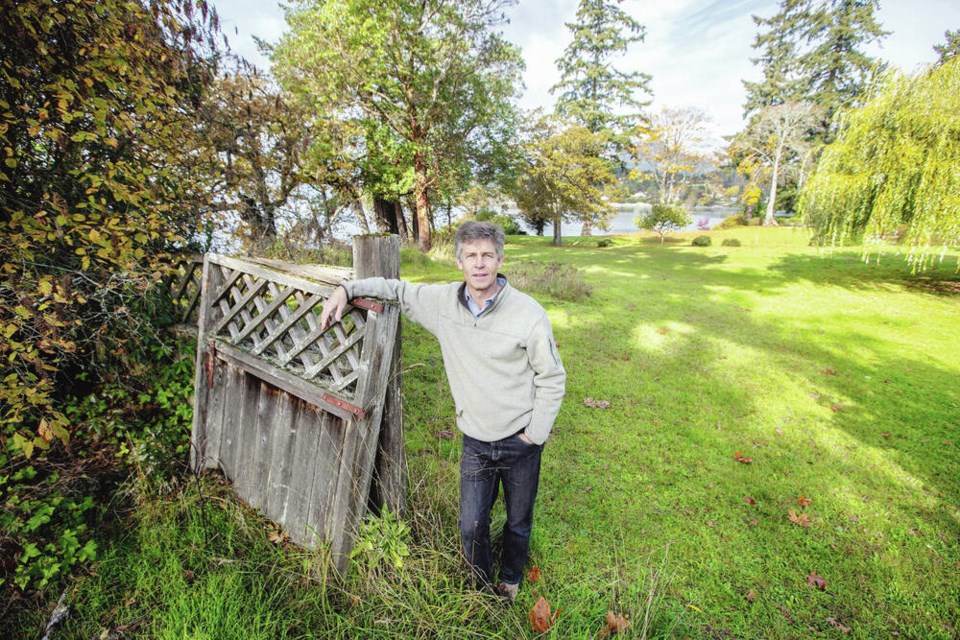Some residents opposed to the way the District of North Saanich is carrying out a review of its Official Community Plan say tweaks to the process, changes to some of the proposed concepts and a promise to improve communication with residents are too little and too late to get them onside.
North Saanich resident Paige Gibson said while she is pleased by a move to pull densification proposals from certain neighbourhoods and the promise of more robust engagement, the steps fall far short of what she was hoping for.
Gibson, who is part of a group calling itself Save North Saanich, which has described the process as flawed from the start, said the team leading a review of the existing plan seems determined to push density and development on what is largely a rural community.
“The fact there is not something more moderate there speaks to the intention of this process,” she said, noting the consultants hired to lead the review process have instead offered options that suggest there could be thousands of new housing units in some parts of the municipality.
The review team has shown slides suggesting there is capacity to build as many as 11,000 new units of housing in the municipality.
“It’s been pretty alarming to see those numbers,” she said, adding maintaining the status quo has never been mentioned as an option. “The overall impression from the community’s perspective is: ‘Do you want this much density or this much?’ ”
Gibson and others have suggested the process has paid little attention to agricultural issues, the environment and climate change, despite those being identified as key issues in the largely rural area.
“It’s amazing how determined this process is and focused this process is toward development and densification,” she said.
North Saanich Mayor Geoff Orr shares some of those concerns. He and his council used a day-long workshop last week to try to address some of the issues and establish a new path for the process.
In an interview, Orr said there had been too much focus on housing and densification to the point that some community residents believe that’s all the process is about.
Orr said the day-long session allowed council to suggest new directions for the review team, tweak high-level concepts the consultants have created and hopefully stress the importance of improving communication and engagement with the community.
“This was about how we chart a path forward,” he said.
In an emotional opening address to the workshop, Orr acknowledged “public trust has been strained” and said he hoped the workshop would start to remedy that.
“It was important to say that — I wanted to make sure that we were transparent and acknowledged exactly what we have heard [from the community],” he said. “People have legitimate concerns.”
He said while some in the community may not like aspects of the process, and resist the idea of adding densification in some areas, it’s important to understand that nothing is set in stone and all options are on the table.
“We will do our best to do things differently going forward and engage in that dialogue, but we will still have to make some hard decisions on some of these topic areas that are not necessarily [popular],” he said.
During the workshop, district council, the review team and district staff considered the feedback so far and highlighted concepts up for consideration, including establishing “neighbourhood nooks” that would diversify land use in residential areas, creating “agricultural hubs” to enhance farming activity with production facilities and even some mixed-use land, introducing sensitive infill, expanding a community hub in Deep Cove and establishing McTavish Village as the focus of dealing with the area’s housing needs.
Gibson would like to see the process stopped until the end of the pandemic, which she said has made community engagement difficult. “Even if I loved the direction this was going, I would still say this is a roadmap for the next 20 years for the municipality and there should be zero impediments to participation.”
She would also like to see the status quo on the table as an option. “It shouldn’t just be do you want the apartment buildings here or over here,” Gibson said.
The review team is due back at council in November with a new engagement plan and what Orr hopes will be enhanced concepts and ideas. After that, there will be another round of public consultation.
Gibson said they may still get an icy response, as a number of residents simply don’t believe them anymore.
“There is a big trust problem there,” she said, noting people have been writing in with their concerns for more than a year. “But at no point have more restrained options been outlined and put on the table.”



